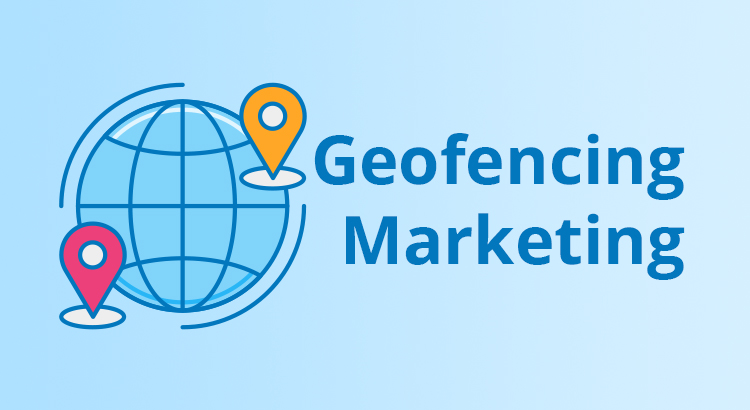Geofencing marketing allows companies to tailor their advertising efforts to specific geographic areas, maximizing engagement and conversion rates. This article will delve into the concepts of geofencing marketing, exploring its definition, functionality, benefits, implementation tips, and associated costs.
List of Contents
- What Is Geofencing Marketing?
- How Does Geofencing Marketing Work?
- Geofencing Marketing Benefits
- 7 Types of Geofencing You Can Use
- Tips for Implementing Geofencing into Your Marketing Strategy
- Geofencing Marketing Companies
- Geofencing Marketing Cost
What Is Geofencing Marketing?
Geofencing marketing is a targeted advertising strategy that utilizes location-based services to establish virtual perimeters around physical locations, such as businesses, events, or competitor establishments.
These virtual boundaries, or geofences, enable businesses to deliver relevant promotional messages or advertisements to individuals within the designated area.
By harnessing technologies like GPS, Wi-Fi, RFID, and Bluetooth, geofencing marketing facilitates precise audience targeting based on real-time location data.
How Does Geofencing Marketing Work?
The mechanics of geofencing marketing involve setting up virtual boundaries around specific locations relevant to the business’s marketing objectives.
When a user carrying a mobile device enters the predefined geofenced area, their device’s GPS or Wi-Fi signals trigger the delivery of targeted advertisements or notifications.
This allows businesses to engage potential customers at strategic moments, such as when they are near a physical store, attending an event, or in proximity to a competitor’s location.
Geofencing Marketing Benefits
1. Boost Local Foot Traffic and Sales
By targeting users within specific geographic areas, geofencing marketing helps businesses increase local visibility, driving foot traffic and sales.
2. Data-Driven Campaigns
The analytical capabilities of geofencing empower businesses to gather real-time data on ad impressions, conversions, and audience behavior, enabling informed decision-making and campaign optimization.
3. Personalized Audience Experiences
Geofencing allows for the customization of marketing messages based on location, demographics, and user preferences, fostering personalized interactions with target audiences.
4. Cost-Effectiveness
With geofencing, businesses can optimize their marketing budget by targeting only relevant audiences within defined geographic regions, minimizing wasteful spending on uninterested demographics.
7 Types of Geofencing You Can Use
1. Location Targeting
Direct ads towards competitors’ locations, enticing potential customers to your business. Geofencing guides interested audiences away from competitors, boosting engagement with your brand.
2. Event Targeting
Place geofences around event venues, capturing attendees’ attention during and after events. Facilitate remarketing efforts for up to 30 days post-event for sustained engagement.
3. Addressable Geofencing
Target individuals at specific addresses, ideal for B2B marketing or reaching known customer addresses. Efficiently advertise to decision-makers or segmented customer groups.
4. Keyword Targeting
Keyword targeting in geofencing directs ads based on individuals’ online content consumption, effectively reaching those interested in your industry.
5. Category Contextual Targeting
Tailor ads based on users’ online content preferences, targeting specific topics or categories. Engage audiences with relevant messaging tailored to their interests and behaviors.
6. Geo-Optimized Targeting
Reach audiences within specific geographic areas based on zip codes, cities, or states. Ideal for expanding brand awareness and targeting larger geographic regions effectively.
7. Website Retargeting
Serve ads to website visitors who showed previous interest in your business, driving them to physical stores. Utilize geofencing to convert online interest into offline engagement effectively.
Tips for Implementing Geofencing into Your Marketing Strategy
1. Research Your Target Audience
Understanding your audience’s needs and behaviors is crucial for effective geofencing. Analyze data to create targeted areas and develop engaging ads that resonate with your audience’s preferences and purchase motivations.
2. Keep Geofencing Boundary Small
Optimize your geofencing area to a 4-5 minute radius around your business. Consider walking or driving habits in your city to ensure your ads reach the right audience effectively.
3. Make Clear CTAs
Craft actionable and concise calls to action (CTAs) in your ads to prompt desired user actions. Clear CTAs like “Buy one, get one free today” drive better engagement and guide users through the purchasing process naturally.
4. Utilize Targeting Techniques
Geofencing marketing can incorporate numerous external marketing techniques, including:
- Context Targeting: Display ads relevant to the content on the page. For instance, show ads for local restaurants beside news articles about dining.
- Content Targeting: Target keywords and their intent. Ensure content aligns with targeted keywords, like discussing private dining areas for “restaurants with private dining areas.”
- Retargeting: Display ads to users who have previously visited your website or storefront, encouraging them to return or complete a purchase.
- Dayparting: Target users at specific times of day. For example, run promotions only on weekdays if your target audience is most active during that time.
Geofencing Marketing Companies
Geofencing marketing companies specialize in location-based strategies to enhance brand visibility and customer engagement. A simple Google search can provide a list of top companies offering these services.
Geofencing Marketing Cost
The cost of implementing geofencing marketing can vary depending on factors such as campaign scope, duration, geographic coverage, and service provider fees. Costs may also include fees for accessing location-based data and analytics tools to optimize campaign performance.
In a Nutshell
Geofencing marketing represents a powerful strategy for businesses seeking to enhance their digital marketing efforts through targeted, location-based advertising. By leveraging advanced technologies and data-driven insights, geofencing enables businesses to engage with their target audience in meaningful ways.


